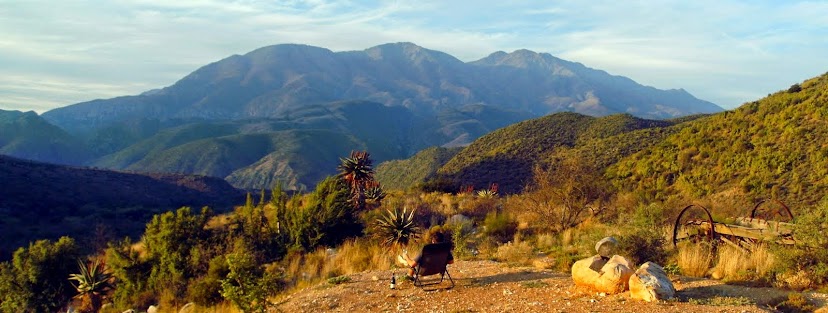Micro-breweries face a number of challenges in a market dominated by the copiously advertised and distributed brands that are not short on pocket change. What sets them apart from these beer Goliaths is the fact that they use no preservatives or additives and don’t pasteurize to lengthen shelf-life. Their beers are natural and hand-crafted; with lots of variety and superb quality and flavour.
Living in England for a couple of years, I got the chance to explore the regional real ales but travelling Australia’s East Coast is what really opened my eyes to micro-breweries and their magical liquid produce.
South Africa is relatively new to the micro-brewing scene but hopefully, with the support of discerning beer lovers, they’ll gain popularity and create ripples throughout the marketplace. The general public has begun to be a little more in tune and inquisitive with what they’re consuming, like where and how products are made and the things that are put in them.
I’ve chosen a couple of micro-breweries to highlight, one fairly well known, the other young but certainly making inroads.

Knysna has been the home of Mitchell’s Brewery since 1983, but because of growing demand, the brand has spread countrywide with a branch opening in Cape Town in 1989. They use only local ingredients, in a process that combines German lagering and British mashing techniques, and produce beers that are high in flavour and low in alcohol. They have the Forester’s Lager, the Bosun’s Bitter, the Raven Stout and last but certainly not least the 90 Shilling Ale, a full-bodied traditional Scottish Ale that I encountered only recently for the very first time, but is actually their biggest award winner. It's made from malted barley, yeast, hops, water and cinnamon and the end result is a spicy ale that is big on flavour.
Mitchell’s recommends an Asian Pork Stir-fry with the 90 Shilling and they were kind enough to give me a recipe for exactly that.
Ingredients:
- 300g medium egg noodles, cooked
- Chinese 5 spice
- 700g pork belly, sliced
- 2 tsp sesame oil
- 2 Tbsp sunflower oil
- 2 Tbsp freshly grated ginger
- 2 red chillies, deseeded and chopped fine
- 1 red pepper, deseeded and roughly chopped
- a bunch of spring onions, trimmed and sliced
- 2 cloves garlic, peeled and finely chopped
- 5 carrots, julienned
- a packet of red cabbage, sliced
- a handful of green beans
- 1 Tbsp honey
- 2 Tbsp dark soy sauce
- a bunch of fresh coriander, leaves and stems chopped and separated
Method:
- heat a wok and another smaller pan
- pour oils in the wok and fry ginger,chillies and coriander roots for a minute
- add peppers, spring onions, garlic and veggies and fry until wilted
- add noodles, coriander leaves, honey and soy
- fry for 3 mins until noodles are steaming hot
- at the same time drizzle a little olive oil in a pan
- rub pork with 5 spice and then fry for 2 mins each side
- serve all together with a 90 Shilling

Camelthorn Brewery, the dream and baby of Jorg Finkeldey, was opened in Windhoek in 2009. He, a South African trained chemical engineer, named his brand after an indigenous tree to highlight it’s resilience in challenging environmental conditions. There are 5 different craft beers under their umbrella and occasionally Jorg creates an additional seasonal delight. Their Brauhaus or Weissbier, a Bavarian style wheat beer, is something very special and even better when combined with an Eisbein. Try the recipe below, get yourself a top wheat beer and see what I mean.
Eisbein with sauerkraut and bread dumplings
Ingredients:
- kosher salt
- curing salt
- 1 litre water
- 3 bay leaves
- 1 tsp marjoram
- 2 tsp all spice
- 1tsp black pepper
- 2 tsp bashed coriander seeds
- 1 tsp juniper berries
- 2 carrots finely diced
- 1 onions, finely chopped
- 2 tsp sugar
- 5 garlic cloves, bashed
Method:
- make the brine by mixing 120g of kosher salt and 12g of curing salt per litre of water
- make enough to cover the pork completely
- make sure you chill the water thoroughly before continuing
- put pork in a plastic container and cover with the brine
- leave in the fridge for 4 days
- bring a pot of water to the boil
- rinse the pork under running water and pop in the pot
- bring back to the boil, remove scum from the surface and turn heat to low
- simmer the pork gently for 3 hours
Bread Dumplings
Ingredients:
- 2 stale rolls, torn into cubes
- 1 cup of warm milk
- 3 eggs, beaten
- a handful of fresh parsley, finely chopped
- a pinch of nutmeg
- salt and pepper to taste
Method:
- put the bread in a bowl and knead in the milk lightly
- cover and leave to rest for 30 mins
- mash up the soaked mix to form a thick dough
- mix in eggs one at a time
- add the rest of the ingredients and knead until smooth
- if the dough is too sticky add some breadcrumbs
- wet hands and form balls with dough, setting aside on a baking sheet
- bring a pot of salted water to the boil, then reduce heat to a simmer
- drop dumplings in and simmer for 20 mins, gently stirring
- remove and serve hot with Eisbein and some sauerkraut








































